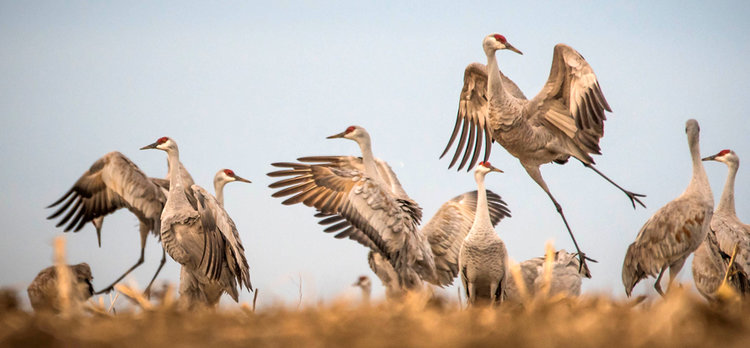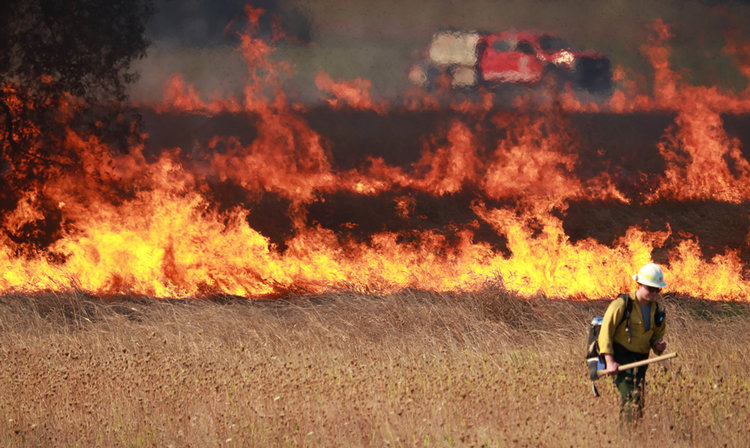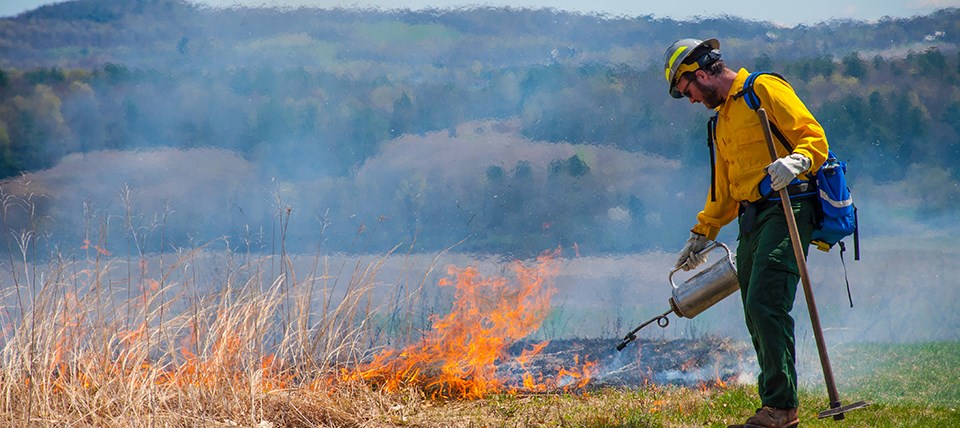The intentional, controlled, and safe use of fire to manage the landscape we now call Ridgefield National Wildlife Refuge was a common practice until Europeans came to the region over 150 years ago.
In September 2018, we successfully reintroduced fire as a management tool to a closed area of the Refuge’s River ‘S’ Unit. In 2019, we had the intention of expanding the use of this effective tool to additional portions of the Refuge where it makes sense and will be safe for the public. Unfortunately, the weather had a different plan. Early rains and regrowth of the dried grasses in September meant we were unable to perform any prescribed fires this year.
Key Dates
August 12 & 13, 2020: The Kiwa Trail will be closed for a prescribed burn to improve habitat. This closure MAY be extended to the entire Auto Tour. Check the Ridgefield NWR website for updates.
July to October, 2020: This is the next “burn window,” the time during which we anticipate prescribed fires on approximately 150 acres of Refuge land, conditions permitting. More information will be posted as we get closer to that timeframe.
This video is a recap of the September 2018 prescribed fire and gives a good sense of what a typical burn at Ridgefield NWR will look like.
Prescribed Fire Helps Wildlife
The types of prescribed fires that Ridgefield National Wildlife Refuge is targeting will help manage two habitat types: Upland grassland and wetlands. Burning upland grassland will benefit wildlife — known as browsers — that feed on short grasses and flowering plants. This includes geese, the iconic sandhill crane, and the protected Columbian white-tailed deer.
The fire removes old, rough, dense vegetation and makes room for fresh, desirable plants and grasses that are more diverse and spread out. In wetlands, fire will help migrating waterfowl by making space for more native plants and grasses. These plants produce seeds, tubers, and other things waterfowl like to eat. They are also important for making nests.

Sandhill cranes, an icon of Ridgefield NWR, are browsers that will benefit from prescribed fire.
Why Use Fire to Manage a National Wildlife Refuge?
Simply put, prescribed fire is:
Effective and comprehensive. It’s a total reset of the soil in one action.
A competitive advantage. Native plants that thrive in low-nutrient soil get an edge over invasives because the fire lowers the overall nutrient level.
Simple and safe. Other methods of habitat management — mowing, discing, grazing, and spraying — require a lot more time and effort.
Time-tested. Indigenous people of this area have been using fire for healthy land management since time immemorial. Highly trained U.S. Fish & Wildlife Service crews have been safely and effectively managing with fire for decades.
National Wildlife Refuges exist to provide healthy habitats for a wide variety of wildlife. A diverse collection of trees, plants, and grasses attracts a lot of animals — and that’s what makes a place like Ridgefield National Wildlife Refuge such a great experience for the people who visit and live nearby.
For thousands of years, fire has been a part of the local landscape. It has sometimes been started by something natural, like a lightning strike. Other times, controlled fire under the right conditions has been used by people to help create good habitat. Without fire, land can become overrun by a single plant (a monoculture), or the plants and grasses can become too dense for animals to eat, nest, or move around. Controlled fire helps the soil start over and have the kind of space and nutrients that attract a better amount and variety of native plants and grasses.

Professional fire crews conduct all prescribed fires at the Refuge.
Prescribed Fire is Safe for Wildlife, Staff, and the Community
Fire is a very visible action. We are committed to making sure it achieves our habitat management goals before making it a regular part of our conservation toolkit. We are equally committed to conducting the fires with an abundance of caution and safety measures that will greatly reduce the risk for wildlife and people.
The fires will only take place in areas closed to the public. If we are burning an area that is typically open to the public, we will close that area during the fire.
Fires in different areas are conducted one at a time to reduce the amount of smoke produced.
More than 20 refuge staff and fire personnel will be on hand during any fire, performing a number of roles including fire application and control, monitoring, and communication.
The method for burning involves specific steps that have been practiced many times by highly trained fire crews.
The burns will not be scheduled until all weather and soil conditions are right, including wind and moisture levels. This prevents the fire from burning too hot or too fast.
The fire moves very slowly, slower than the average walking pace, so both wildlife and fire personnel are at extremely low risk for negative impacts from the fire.
